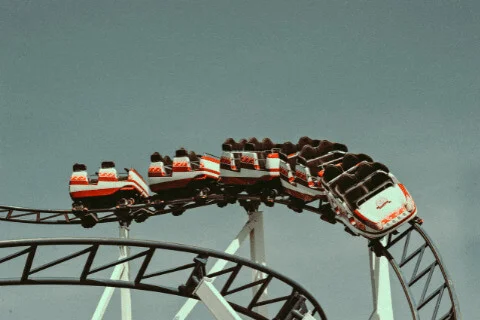How high net worth individuals need to navigate market volatility
article • Investment Management

Nimish Shah
2022-04-07 | 3 Minutes
Empirical data suggests that investors can be their own worst enemies when they change their investment plans in face of adverse market conditions. At the bottom is depression, then comes hope, optimism, and euphoria, respectively. It is interesting to note that at the bottom, i.e., at the stage of depression, the actual risk to the portfolio is minimal because the downside is limited. On the contrary, during market excitement and euphoria-driven cycle, the risk in the portfolio is at its maximum. But investor psychology and markets are often inversely correlated. During the depression cycle, there is maximum fear and at the euphoria stage, there is maximum greed. Gyrations in the market emotionally challenge investors to sell their champions in bad times driven by black swan events like the first covid outbreak and now the ongoing geopolitical crisis.
It is in these situations that a strategic asset-allocation plan brings long-term stability to a portfolio by minimizing constant tweaks, driven by emotional decision-making, to a portfolio. In the US, Vanguard carried out a study on returns of a portfolio comprising 60% equity and 40% bonds. From 1926 to 2020, a 94-year history, an investor would have achieved returns of 9.1% p.a. In India, a similar combination of large-cap stock and bond index would have resulted in a return of 10.5% p.a. from 1995 to 2022. Surely, these are good returns to hold on to your risk-based asset allocation for the long term.
Another common mistake high net-worth individual(HNI) investors make is increasing cash by substantial amounts during volatile stock market movements and reducing equity exposure due to perceived higher risk. Cash can be a double-edged sword and we have seen many good fund managers underperform due to high allocation to cash. In fact, as stock valuations become attractive during a depression cycle, investors should take a tactical (short to medium term) call to go overweight on equities by 5-10%.
Diversification is another risk-neutralizing tool that can help reduce volatility. However, one needs to be careful so as to not over-diversify within an asset class, thereby saving oneself from diminishing returns. Once again, diversification among stock portfolios increases during the bull -phase of markets where investor psychology drives them to invest in newer ideas that promise to give better returns than the champions they currently hold. While we are not suggesting sleeping at the wheel, it is crucial to evaluate and sell the laggards (not the champions) and the long tail of the portfolio before you add more probable winners.
Winners or champion stocks would be those companies that are established leaders in their business segments with increasing market share, have demonstrated consistent growth in the past, and are expected to grow at least 12-15% p.a. over the next 3 years. One should not be tempted to sell off such champions as they show the maximum mark to market gains, and it would be akin to selling the family silver. On the other hand, laggards would be companies that have been bought from a tactical perspective and where the investment thesis has not played out or where the companies have been unable to retain their market share. These companies could also be ones with higher price volatility and ones that typically require higher capital. In our experience, generally, there are 10-20% (in value terms) of stocks in a portfolio that could be exited. Sector and stock re-balancing should be done at this stage rather than diversifying more. From the stage of euphoria, that we saw in 2020-21, to the stage of anxiety and fear, in Q1 2022, it is abundantly clear that these are volatile times. These risks have been accentuated by the geopolitical tensions and increasing global inflation which threatens to curtail world growth.
However, even if the world growth slows down from the expected 4.2% to around 3% in 2022, it is still a very good growth story. Growth in India would also slow, albeit lesser because the economy is insulated. War situations can disrupt global trade and currencies, but both trade and growth are like water; Eventually, they will find their own way forward. Remaining an optimist during a pessimistic economic scenario is the key to ensuring steady returns. If you hold your champions, stick to the asset allocation plan, and not act in volatile situations, you should be able to come out unscathed and unharmed. Trusting your advisor, monitoring your portfolio, and, most importantly, sticking to your investment plan will help you navigate the choppy waters.














